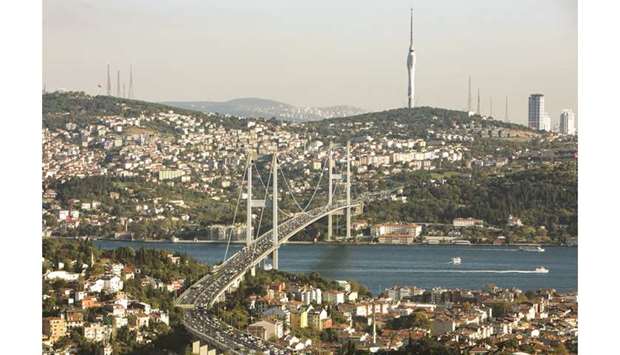Turkey’s economy grew 0.9% year-on-year in the third quarter, breaking three consecutive quarters of contraction as it shook off a recession which followed last year’s currency crisis.
Turkey has a track record of 5% growth, but a 30% slide in the lira last year pushed up inflation and interest rates, while domestic demand tumbled. The central bank has since slashed rates to revive activity.
Monday’s data was in line with a Reuters poll which forecast 1% year-on-year expansion in the third quarter.
The poll also predicted that the economy will grow 0.5% in 2019 as a whole.
The government has forecast 5% growth next year, and Finance Minister Berat Albayrak wrote on Twitter that leading indicators for the fourth quarter showed growth momentum was continuing to increase.
But economists say achieving the government’s target could prove difficult.
“The key issue for me is that there is still not that much confidence among households and corporates,” said Piotr Matys, emerging markets forex strategist at Rabobank.
He said authorities needed to make significant progress on economic reforms to restore confidence amongst investors and locals, with efforts so far having focused mainly on short-term solutions.
The third quarter growth was driven by the agricultural sector which expanded 3.8%, while industry grew 1.6% and services grew 0.6%. However, the construction sector, which underpinned years of strong economic growth in Turkey, shrank 7.8%, the Turkish Statistical Institute data (TUIK) said.
The lira was at 5.7550 against the dollar after the data, weakening from 5.74 beforehand.
Compared to the second quarter, gross domestic product expanded by a seasonally and calendar-adjusted 0.4%, its third positive quarter-on-quarter reading in a row, TUIK data showed.
QNB Finansbank said in a note that private consumption was the major driver of growth quarter-on-quarter, but its contribution had weakened.
TUIK said exports increased 5.1% year-on-year in the quarter, while imports grew 7.6%.
As the economy has recovered, inflation tumbled to single digits in October due to base effects, and loan growth picked up thanks to central bank rate cuts. In the second quarter, the economy shrank a revised 1.6% year-on-year.
In late October, the central bank slashed its policy rate more than expected to 14%, continuing an aggressive bout of cuts from 24% since July to help revive the recession-hit economy.
The central bank governor subsequently said the bank had used a significant part of its leeway for loosening monetary policy.
Last week, he said the bank will use required reserves to support real sector access to loans and loan growth.
The government’s own sharply lowered forecast for the year envisages growth at 0.5% in 2019, and 5% in 2020.
QNB Finansbank said it revised its 2019 growth forecast to 0.6% from 0.8% after the data, and saw year-on-year growth for Q4 as likely to be above 4%.
A business survey yesterday showed Turkish manufacturing activity contracted in November as new orders slowed although output picked up.
The Purchasing Managers’ Index (PMI) for manufacturing rose to 49.5 from 49.0 in October, said the Istanbul Chamber of Industry and IHS Markit.
“The economic confidence index and its components suggest a broad-based recovery in economic activity in Q4,” the QNB Finansbank note said.

Traffic passes along a road bridge across the Bosporus in Istanbul (file). Turkey’s economy grew 0.9% year-on-year in the third quarter, breaking three consecutive quarters of contraction as it shook off a recession which followed last year’s currency crisis.


